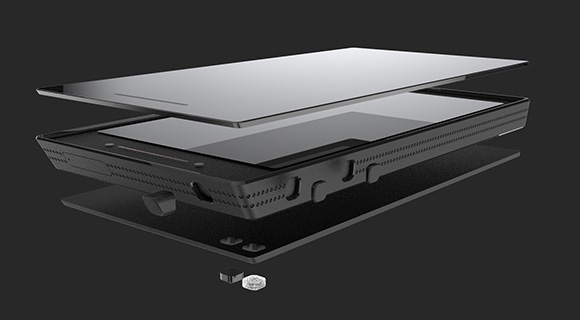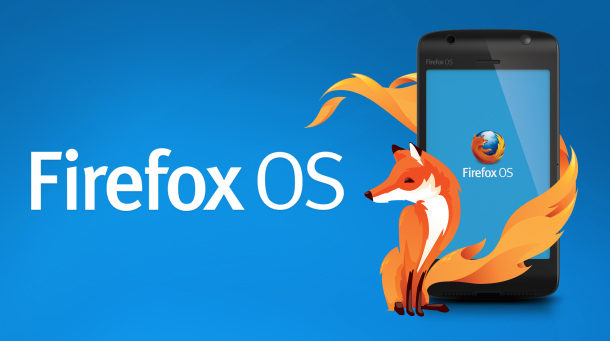Was this the year of Linux in the desktop? That’s hard to answer. The rise of ChromeOS could very well mean this was the beginning of Linux hitting mainstream on desktop computers. Sadly, we don’t the know the future! If ChromeOS does rises and becomes a viable competitor to MS Windows then 2013 will be remembered as the year of Linux. If it doesn’t, how will the 2013 be remembered?
This year’s disappointments
Ubuntu Edge
For an entire month the community dreamt about a high-end smartphone designed from the ground up for Ubuntu for phones. One with an unlocked bootloader to install Android, FirefoxOS or any other operating system you wanted. A screen coated with sapphire, a metal body, 128GB of internal storage, multi-band LTE, at least 4GB of RAM, every piece seemed to be out of a geek’s wettest dreams. It probably was.
The crowdfunding campaign had the most ambitious goal yet: $32,000,000 dollars. When it launched it seemed like a fantasy that could never be realised. Then came the first day, with the phone priced at $600 the Edge was flying off the shelves. It took Canonical less than a day to hit $3,000,000.
But the $600 price was a limited perk. Soon the only way to get the phone was to spend $830, a price far too high for any smartphone especially one that wouldn’t see the light of day until 8 months later. The rate of contributions fell of a cliff, Canonical wouldn’t even hit $7,000,000 at that rate. Then it was all a disaster of ever changing campaigns that went from limited perks ranging from $625 to $800 to a final single price of $695 that was probably still too high and came too late. Regardless, the Ubuntu Edge broke all crowdfunding records and stood proudly at a failed but still impressive $12,814,216.
Android’s slippery slope into closeness
Google started two years ago to slowly and steadily tighten its control over Android. What were mostly open source applications a few years back are now mostly closed source applications. Everything from the music player to the phone dialer to the launcher are now closed source. Worse yet, key APIs developers use on Android are also closed course. Forking Android at this point is almost equivalent to starting from scratch. Google has moved everything that makes it popular to its own servers in the Play Store disguising the whole operating as a promise of faster updates.
This was also the year Acer tried to fork Android (Aliyun OS) and was ordered by Google to stop. Why? Acer belongs to the Android “Open” Handset Alliance, i.e. it’s one of the OEMs with access to Google’s Play Store services. And Google has made sure that a condition to belong to it (and access the Android ecosystem) is that you can’t fork Android.
FirefoxOS
While a few phones were released with it (and I’ve even used one), the utter lack of any form of impact was one of this year biggest disappointments. The market is still running high on Android low-end devices and to a lesser extent Windows Phone. FirefoxOS sadly doesn’t bring much interesting to the table.
Perhaps the worst part of FirefoxOS is the store is provided by the carrier, so app developers for it will have to deal with them once again (as they did before Apple’s App Store). Mozilla argues that native apps will be less relevant with the emergence of web apps. If the other platforms are any indication (Android, iOS and WP), Mozilla is wrong. In a world dominated by Instagram, Facebook, Twitter, Vine, and their friends this seem like wishful thinking.
Mir v. Wayland
Topping the list, of course, is what could potentially split Linux in two. Historically, we’ve never been good at setting standards so it’s sometimes hard for other developers to support Linux. But until now we had the display server issue sorted out: We didn’t love X/X.org but we all used it and manufacturers supported it. Imagine how much worse the support from some companies (like NVidia) could get now that we don’t even have a standard.
Regardless of the technical merits of Mir and Wayland, an issue that’s beyond my technical scope, we’ve seen the battle deviate into straight madness. KWin’s main developer, Martin Gräßlin, who I’m sure has good technical reasons to dislike Mir and is also a brilliant developer, declared:
Will KWin support Mir? No! Mir is currently a one distribution only solution and any adjustments would be distro specific. We do not accept patches to support one downstream. If there are downstream specific patches they should be applied downstream. This means at the current time there is no way to add support and even if someone would implement support for KWin on Ubuntu I would veto the patches as we don’t accept distro-specific code.
On the other face of the coin, Mark Shuttleworth and Canonical have consistently dismissed the worries of the community and even resort to straight up ad-hominems and name calling:
Mir is really important work. When lots of competitors attack a project on purely political grounds, you have to wonder what THEIR agenda is. At least we know now who belongs to the Open Source Tea Party
It’s also a symbol of the wall that has been steadily rising between Canonical and the rest of the community since many years ago. Canonical dropped support for Kubuntu (and Blue Systems stepped in) and pretty much any project that isn’t build around its own Unity. In a way, the Linux community is opposing the idea of Mark Shuttleworth and Canonical being the ones making all the calls. Yes, Ubuntu is by far the most popular Linux distribution, but that doesn’t mean Shuttleworth should be able to control the fate and path of the entire community. If one or the other is adopted it should be better on technical grounds and the discussion just isn’t happening, both sides are instead recurring to political pressure. Let’s just hope the discussion evolves as suggested by Aaron Seigo into a discussion among mature adults. Dedoimedo wrote about the issue at length a couple of months ago in his The Linux Display Saga.
The consequences if this isn’t solved smoothly are potentially catastrophic for the entire community, manufacturers are not going to support two different display servers.
Conclusions
There were many other minor disappointments this year, for example I thought of including the entirety of GNOME 3 in the list. But at the end of the day I think those four are the biggest of all. Weirdly, three out of the four disappointments were on the mobile space, the industry dominated by Linux. And only one, albeit that one is gigantic, belong to the desktop.
Will 2013 be remembered as a bad year for Linux then? Not so fast. Before making your mind you’ll probably want to read the good moments of this year.
[sharedaddy]





